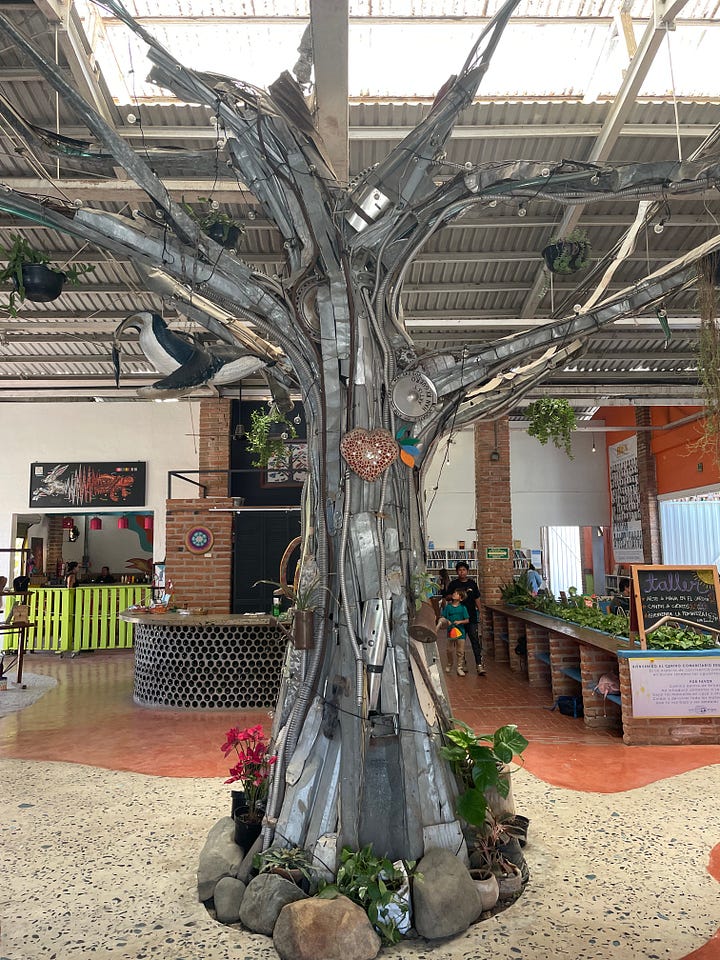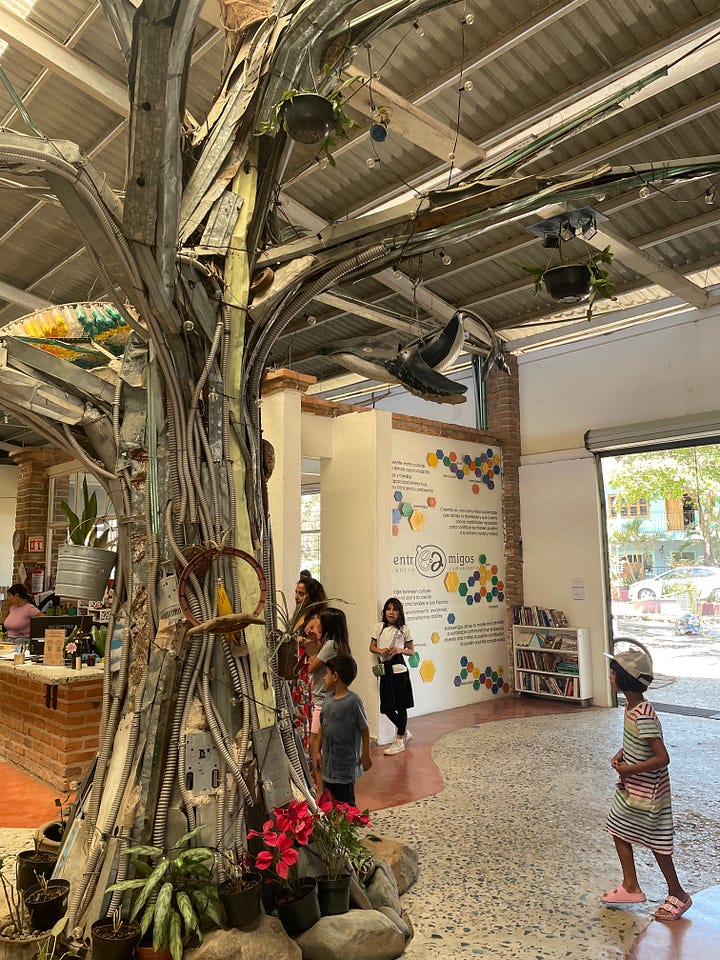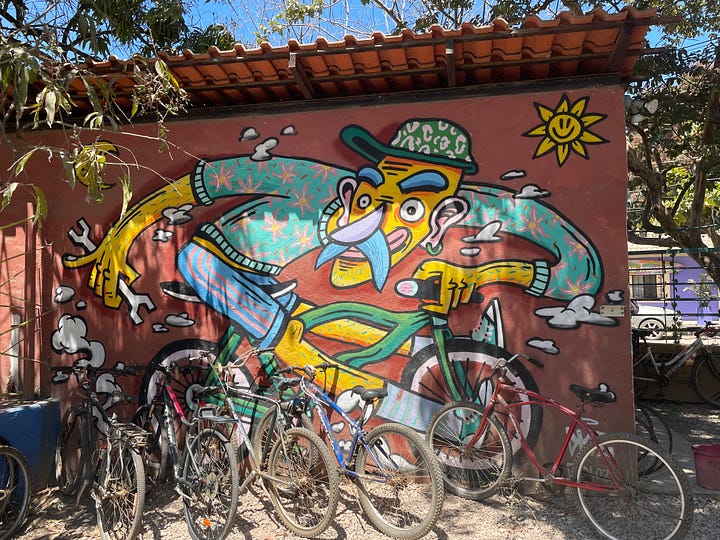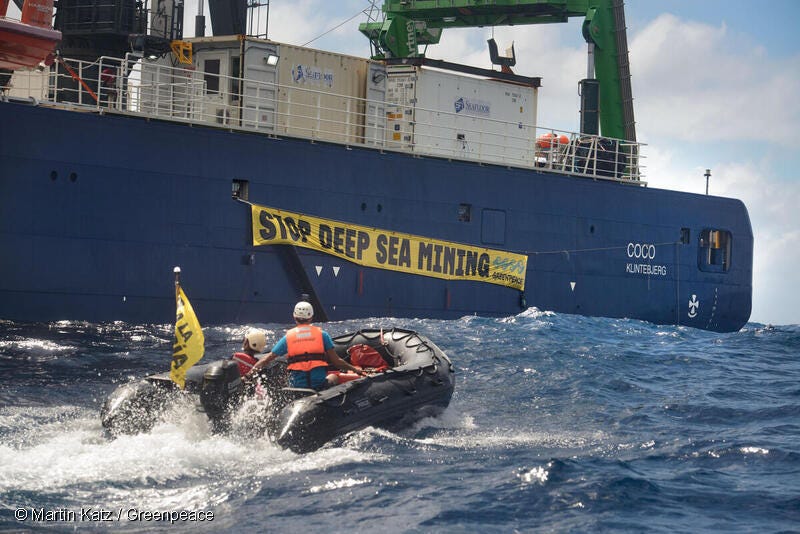Mine Seaweed, Not the Sea Bed; Mango Tree to Metal Tree
And more about the human and environmental costs of renewable energy and digital technology—and how we can do better.
Before we get started, a quick appeal. I’ve been cranking out this newsletter for a solid year now, offering up what I hope is valuable news and analysis on the perils and promise of the oncoming Electro-Digital Age. It’s been a very rewarding experience, and I’m tremendously grateful to the nearly 3,000 of you who have subscribed. To keep it going, though, I need a little more help. I’m a 100% independent journalist, which means I’m not beholden to any corporation, advertiser or sponsor—but I do have to make a living! So, if you can afford it, please consider upgrading to a paid subscription. The basic level is just $5 a month—that’s the cost of a donut and a half, tops. Or for if you sign up at the Founding Member level, I’ll send you a signed copy of Power Metal, the book! (Or The World in a Grain, your choice.)
If you can’t or don’t want to pay for a subscription, that’s fine. You can still help by clicking the Like or Restack buttons at the bottom, forwarding this newsletter to friends, or sharing it on your favorite socials. In any case, many thanks for reading!
Mine Seaweed, Not the Sea Bed
President Trump doesn’t only covet the critical metals of Ukraine and Greenland; now, he’s reportedly setting his sights on the ocean floor. According to Reuters, the White House is considering granting mining companies permission to start digging up minerals from the bottom of the Pacific, potentially spawning an environmental catastrophe.
Nutshell context: Parts of the Pacific’s seabed are carpeted with fist-sized rocks that are jam-packed with nickel, cobalt, manganese and other critical metals. It’s a bounty that could be worth hundreds of billions of dollars. Several companies and governments have been pushing for years to be allowed to harvest them. Under international law, however, only the UN-affiliated International Seabed Authority has the power to say ‘yes’ or ‘no’ to mining in international waters, and so far has said ‘no’, because of widespread concern over the enormous damage that seabed mining could cause. The US, however, never signed on to the treaty that established the ISA. (For more details see my chapter on the issue in Power Metal, the book, excerpted here.)
President Trump is well aware of the importance of critical metals, and of how China’s dominance of them threatens American power. It’s why he’s so interested in Greenland and Ukraine, and why in late March he signed an executive order aimed at boosting American mining and refining. “The United States was once the world’s largest producer of lucrative minerals, but overbearing Federal regulation has eroded our Nation’s mineral production,” it reads.
One week after that order came out, The Metals Company, the outfit most aggressively pushing for permission to start seabed mining, said it would now turn to the US for that permission. Essentially, the company is proposing to simply ignore the International Seabed Authority. Dozens of countries came out against the move.
Nonetheless, Trump is apparently considering giving the company its blessing in the form of another executive order. The order would “let miners bypass the ISA and seek permitting through the U.S. Department of Commerce's National Oceanic and Atmospheric Administration's mining code,” reports Reuters*.
If the US does unilaterally green light deep sea mining, several other countries including India and China could well follow suit. Worst case, we could see a free-for-all at the bottom of the Pacific, with a hodgepodge of companies and countries ripping up as much of the seafloor as they can before their rivals get there.
All that said, it’s entirely possible that, like so many other outrageous ideas Trump floats, he won’t follow through on this one. The treaty that established the ISA also governs many other crucial aspects of international behavior on the high seas, and spitting on it could have serious economic and even military repercussions beyond sea mining. That might be enough to give even Trump pause.
While we’re talking about extracting metals from the sea, let me end on a brighter, and pleasingly weirder, note. As Grist reports, scientists at Washington state’s Pacific Northwest National Lab are working on harvesting cobalt, lithium and other minerals with the help of humble seaweed.
Turns out there are lots of dissolved metal particles floating around in the ocean, but they are so diluted it’s very difficult to extract meaningful amounts of them. For humans, at least; for algae, it seems, less so. Researchers have identified a particular type of seaweed, called ulva, that very effectively filters out and sucks up such particles, concentrating them in its tissue. The metal-rich ulva can then be dried and crushed into a powder from which the metals can be extracted.
The process is a long way from being commercially viable. It will take a lot more research to find out if it’s worth pursuing. One key takeaway, though, is that there are many other ways by which we might be able to get the metals we need without risking the planet.
(*Hat tip to Ernest Scheyder, one of the reporters behind that Reuters report, with whom I shared a panel recently at the Tucson Festival of Books. )
From Mango Tree to Metal Tree
While I was vacationing in Mexico last week with my son, we stumbled across a beautiful example of local folks recycling metal and other scrap for everyone’s benefit. The Entre Amigos community center in the town of San Pancho, Nayarit, grew out of outdoor arts classes a California woman started teaching under a mango tree almost twenty years ago. More locals and foreigners got involved, and the group was eventually able to take over an abandoned milk and cheese factory. They raised money, put in a lot of work, and transformed the place—recycled it, in effect—into a gorgeous community center complete with a library, second hand clothes shop, computer room, bike repair shop, recycling center, and a playground with swings and teeter-totters made from repurposed tires. In the middle of it all stands a “tree” made of metal scrap salvaged from the old factory—homage to the original mango tree.
Pretty great, right? You can help them out by volunteering or donating here. It’s even tax-deductible!




Book News
Had a great chat about Power Metal last week with host Josh Weber on Minnesota’s Write On Radio. Later this month I’ll be meeting journalism students and speaking at the University of Missouri. I’ll have a little extra time while I’m there…anyone have suggestions on what’s cool in and around Columbia, MO?
More News Worth Knowing
⚠️ Paris Votes to Keep Cars Off 500 More Streets
🏝️ Unrest Drives Thousands From Nickel-Rich New Caledonia
🗣️ Russia and US in Joint Rare Earth Talks?
⚡️ Shortage of Transformers is Throttling the Energy Transition
♻️ Can This Company Harvest Millions of Tons of Copper From Waste Piles?






Sure your payment system is working, Vince? Won't take my card and it should, as far as know.